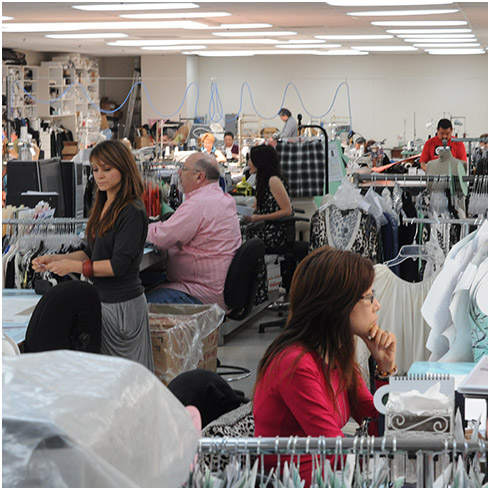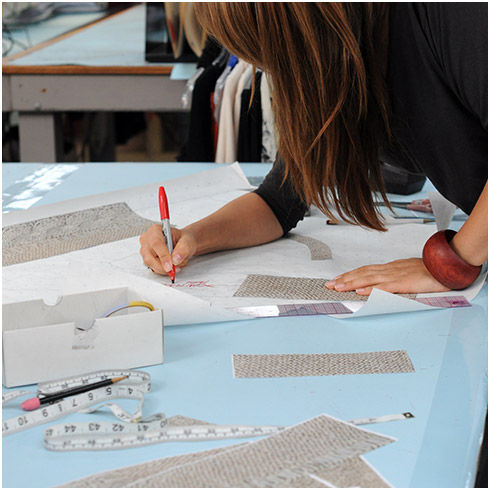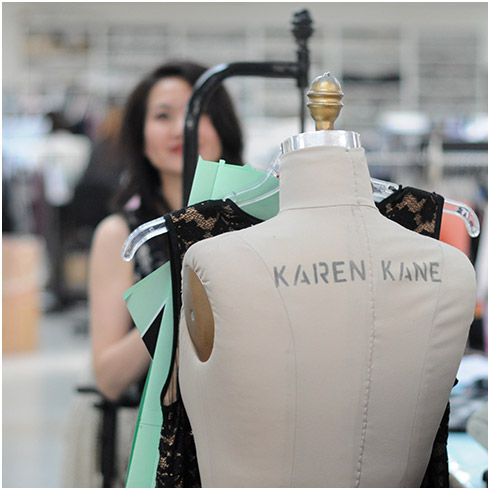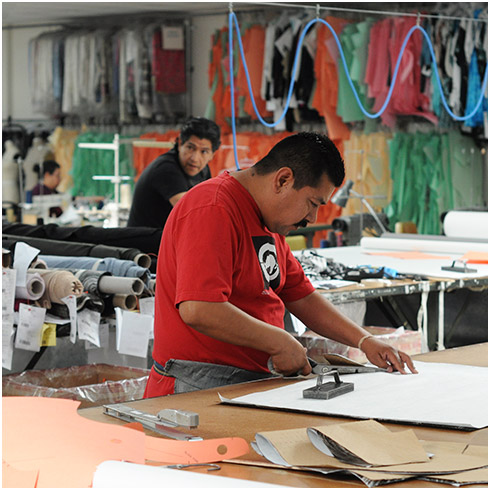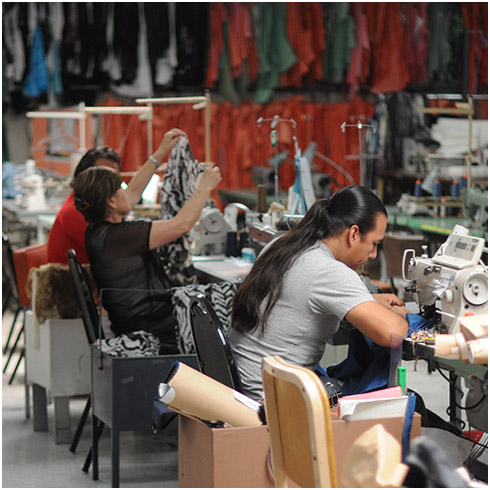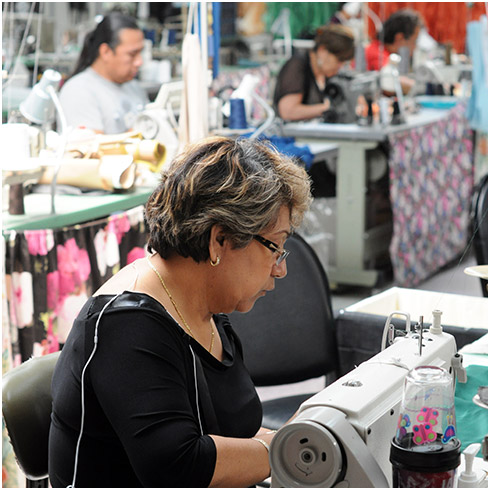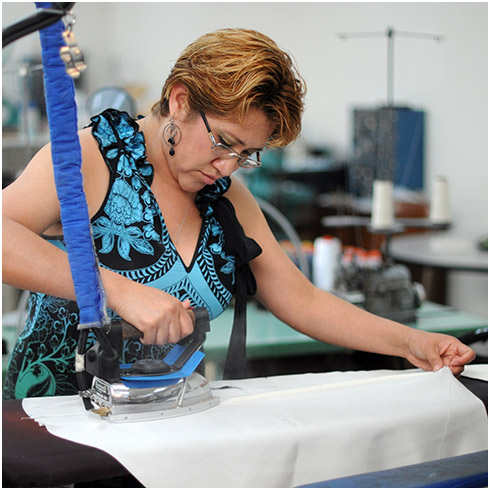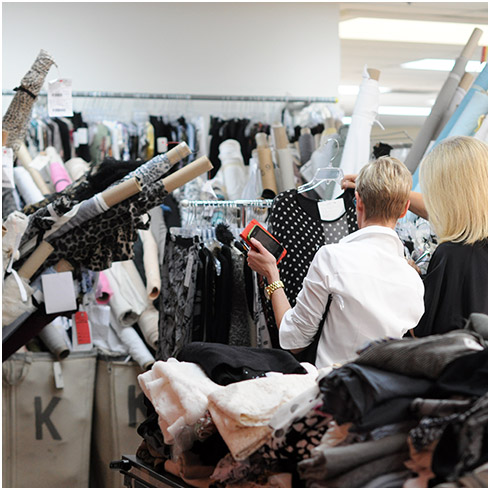This was my absolute favourite part of Karen Kane Headquarters! My heart raced as I stepped into the sample production room and saw countless boxes of trims, thread, and rolls of fabric, and long racks of patterns and garment prototypes. It took me straight back to my own fashion design days at age 23, when I worked as a junior designer for a children’s wear company (although that sample room was much, much smaller and less elaborate).
This is NOT the factory floor where items are mass produced, but merely the sample room where design ideas are taken from drawing to tangible garment. Karen Kane is a large operation, manufacturing five labels for many different retailers, so their sample room alone looks like an assembly line. Here, concepts are tested, fits are perfected, and brand new ideas are churned out daily. The room is a melting point of creativity and the skill set represented is mind blowing.
I’m energized just thinking about it! Allow me to walk you through the room.
The sample room is filled with designers, pattern makers, quality controllers, fit specialists, fabric specialists, sample pattern cutters, sample pressers and sample machinists — all experts in in their specific area.
Back in the day, I drafted pattens by hand, an awfully finicky process. These days they are constructed by computer programs and sophisticated pattern making machines and the details are finished off by hand.
Pattern pieces and design prototypes are repeatedly fitted both onto mannequins and fit models (who come in two mornings a week). The company designed their own mannequins, which range from regular to plus sizes.
These gentlemen are sample cutters. Once the patterns are complete, they lay them out onto the desired fabric and cut out the pieces required to complete a style.
The fabric pieces are handed down to the sample machinists who complete all sewing operations across a variety of sewing machines. Just look at the cardboard pattern pieces in the background! There are rails of them, all immaculately documented and administrated, each colour representing a different Karen Kane label.
Factory machinists are very skilled at their particular sewing operation, but sample machinists like this lovely lady, have to be skilled at ALL sewing operations because they sew a garment from start to finish.
There is a surprisingly large amount of pressing involved during both sample and garment production. The more effectively a garment is pressed while it’s being made, the easier it is to sew AND the neater the construction of the finished product.
Here are Karen and I looking at a completed prototype, a polka dot blouse, that caught my eye amidst the endless rolls of sample fabric. How exciting! I could visualize how it was first conceptualized from a sketch, all the way down the sample line and onto this rail.
It is a fulltime, bustling business to keep up with both the creation of prototype and final samples for seasonal collections, hence the impressive sample room. Karen spends a lot of time in the room, overseeing the process and making sure that the right samples are produced every day. The company presents their monthly collections to fashion buyers “at market” with the help of account execs and sales reps all over the US. There are five markets a year, two a retail season plus resort wear. The work that goes into prepping for these markets is quite something, don’t you think?
I asked Karen what part of her job was her favourite, to which she replied: “Seeing something new come down the line each day”. After experiencing the buzz in this sample room, I totally understand why that’s the case.
This is the second in a series of posts sponsored by Karen Kane:
- Design at Karen Kane
- Karen Kane’s Sample Room (this post)
- Clothing Production at Karen Kane
- Karen Kane’s Trim and Dispatch Departments
- Karen Kane the Family Business
For more information you can follow @Karen_Kane on Twitter or like their page on Facebook.
